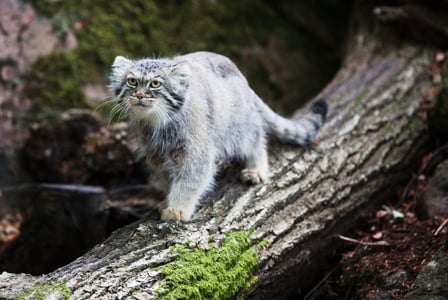
This week, were looking at the Pallass cat – a unique feline species with so much fur that they look a lot bigger than they are!
They’re cute, fuzzy, and they were once thought to be the reason why the luxuriously long-haired domestic Persian cat exists. This Wildlife Wednesday, we’re learning about the absolutely adorable Pallas’s cat, and why their numbers are dwindling.
Habitat
These furry felines are most often found in the grasslands of Mongolia and the Tibetan plateau, but they’re occasionally spotted in China, Russia, and across central Asia.
Trivia
- Pallas’s cats have unusually thick fur on their undersides, and that fur is also about twice as long as the fur elsewhere on their bodies. Researchers think that this is to help the cats stay warm when they’re out hunting and stalking prey.
- Unlike most felines, Pallas’s cats do not have pupils that constrict into a slit when faced with bright light. Instead, they react like human eyes, and constrict into small circles.
- These cats are not nocturnal. As opposed to the rest of their feline family, Pallas’s cats are crepuscular, which means that they’re most active during dawn and dusk.
- Pallas’s cat was named after Peter Simon Pallas, a German naturalist who described a number of species—including this one—during a Russian expedition in the late 18th century.
Why are they threatened?
Although currently listed as “near threatened” by the International Union for Conservation of Nature, the Pallas’s cat population is on the decline.
Historically, this feline population took a big hit due to hunting for fur, with historical numbers in Mongolia topping 50,000 skins.
Currently, Pallas’s cats are threatened due to efforts in Russia and China to control rodent populations—which are the primary prey for these cats—through the use of poisons. Secondary poisoning, in which a cat is poisoned by catching poisoned prey, is a concern, and, in some areas, the cats are also facing prey shortages. Further threats include habitat degradation and disturbance by humans and their pet dogs.
